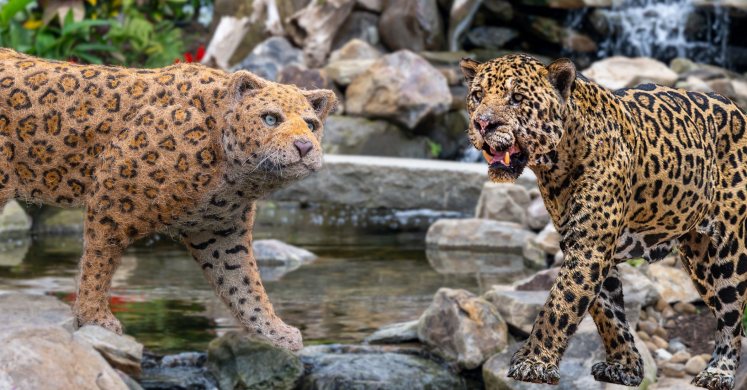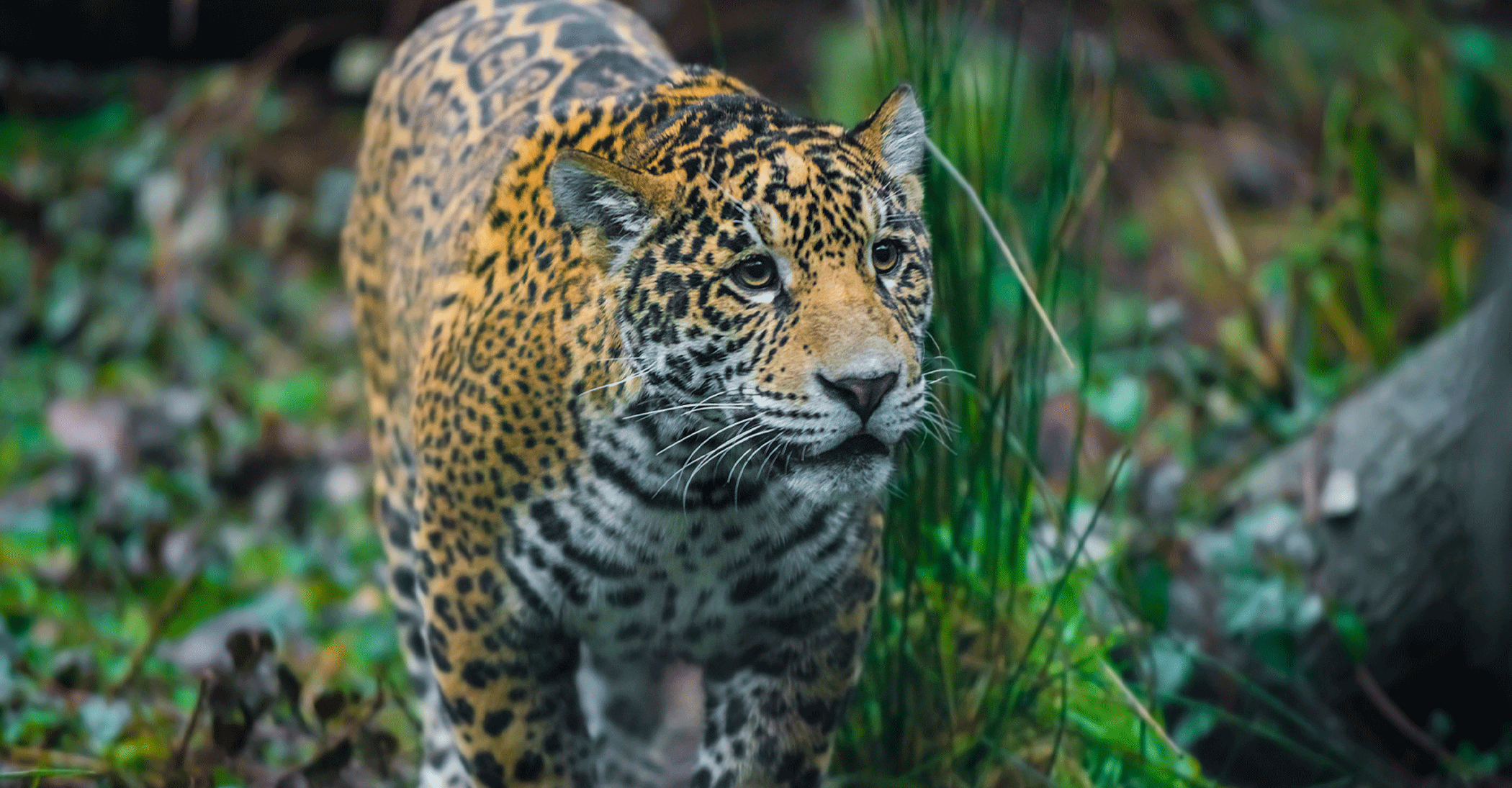Blog

Jungle Creatures and Fantastic Features: Jaguars
In our East Room, you are greeted by a lazy stream and a life-sized panther staring at you! Don’t panic, it is just one of our most popular and realistic topiaries, the jaguar. Exhibit associate Lauren Seiple collaborated with Russ Tomkins from the facilities department to design and build the big cat. By welding bespoke legs to a recycled frame, they were able to create the jaguar’s illusion of movement and power. Once the form was completed, the jaguar was covered with poultry netting and coco fiber. The iconic spots were painted on using an airbrush. To give the topiary more personality, the face was finished with glass eyes, a staghorn fern nose and grass whiskers. The overall effect is stunning! Lauren proclaimed it her favorite topiary in the show saying, “the jaguar looks like it started to cross a stream but froze in its tracks because it saw you walk into the room.”

With help from The Pittsburgh Zoo and Aquarium, let’s learn about the actual creature that inspired our topiary creation! Did you know that the jaguar is the world’s third largest cat species after tigers and lions? Although jaguars and leopards look similar, jaguars are only found in the Americas, while leopards call Asia and Africa home. A jaguar’s spots are different, too, as they are rose shaped with a black spot in the middle. This spotted coat is ideal for camouflage in the rainforest, allowing the jaguar to blend in with the alternating light and dark patches of the jungle background.
The world’s largest jaguar population is found in Brazil’s Amazon rainforest. The cats are very adaptable and are also found in limited areas of Mexico, Guatemala and Argentina. Jaguars are excellent swimmers and often hunt in water, they are known to dip their tails in the water to lure fish closer! Their varied diet also includes birds, reptiles, and mammals including monkeys, peccaries, and capybaras. The jaguar’s powerful bite is strong enough to pierce the shells of turtles and tortoises.

Jaguars are listed as “near threatened” by the International Union for Conservation of Nature. The Amazonian rainforest is the largest remaining habitat for jaguars with vast areas of intact forest remaining. However, the Amazon is changing rapidly. Jaguars have disappeared from over 50 percent of their range, which once spanned from Argentina to Arizona and New Mexico. Major threats include deforestation, mining, and cattle ranching, which reduce and fragment the jaguar’s habitat and food sources. This means less space, harder-to-find prey and harder-to-locate mates. While there are not currently any jaguars on display, our friends at the Pittsburgh Zoo and Aquarium provide a home for several big cat species including lions, tigers and cheetahs!
Stay tuned as we highlight more of our jungle inspired topiaries and their real-life counterparts to share interesting facts about their unique characteristics!

